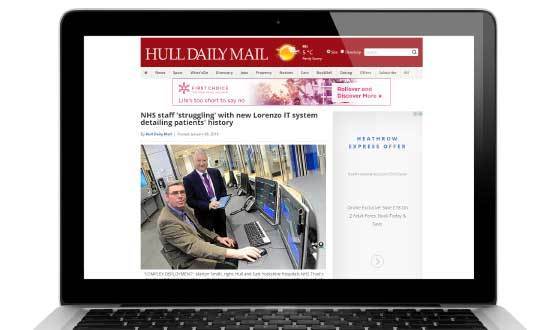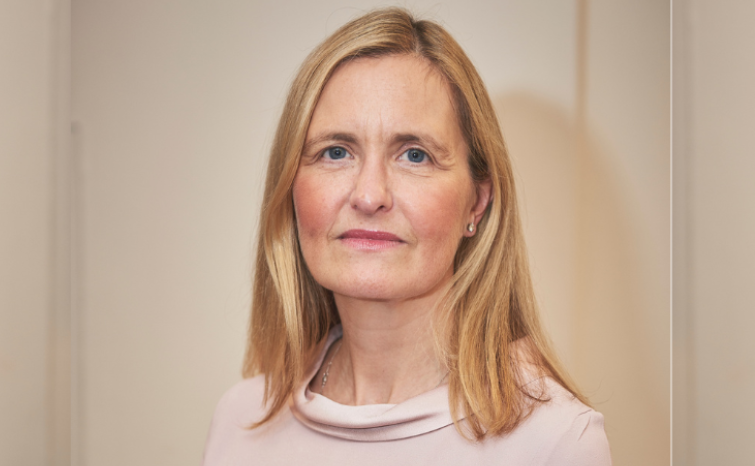Hull of a job: Hull and East Yorkshire Hospitals’ EPR deployment, six months on
- 18 January 2016

“Doing nothing was not an option, and Lorenzo was the best option for this trust,” says Martyn Smith, director of IT and innovation at Hull and East Yorkshire Hospitals NHS Trust. “So no apologies.”
However, he acknowledges that 221 days into an ambitious, big-bang deployment of the CSC electronic patient record, not everything has gone smoothly and not everybody is happy.
“Lorenzo works differently [to the trust’s legacy patient administration system] and it helps us work in a different way,” he says. “That has an overhead and we underestimated that overhead.”
In particular, he adds, the trust underestimated the impact on receptionists and administrative staff such as ward clerks, who have to enter and validate information in the system. “It is the data collection and validation that caught us.”
This has had an impact on the trust’s reporting of waiting times and its financial position. A detailed report to the board on the trust’s referral to treatment time or RTT performance shows that the percentage of patients that it is recording as treating within the target of 18 weeks has fallen.
At the same time, the number of incomplete pathways has risen; triggering significant financial penalties.
Smith says two reasons this is happening is that Lorenzo requires staff to use national codes, rather than local codes that map to national codes, for RTT, and to attach an access plan to a new record. This lays out further tests and actions, and should support better care along the patient pathway.
But, under time pressure, he acknowledges that some staff are opening new records or picking the wrong pathway. Circumspectly, he suggests Lorenzo is also exposing some issues with the way some specialities operate.
So, as is so often the case with major IT deployments, it looks as if the issue is as much about working practices as systems. Putting in a big, new EPR is hard; getting everybody in a trust employing 8,000 people to embrace it is harder.
Moving off a 16 year old system
Hull and East Yorkshire Hospitals has certainly been ambitious. It was running one of iSoft’s older patient administration systems, PatientCentre, when the board approved a five year, £20 million IT strategy in 2011.
On the back of this strategy, it became the second to decide to take Lorenzo as part of the deal struck between the Department of Health and CSC to draw a line under the company’s National Programme for IT in the NHS commitments to the North, Midlands and East of England.
The deal gave the trust access to some central funding for the purchase and deployment. But Smith says it was the best option anyway, because it was already using so many CSC products.
Indeed, because the trust already had electronic order communications and results reporting, it became the first to plan a ‘big bang’ go-live of Lorenzo with this functionality in place from the outset, instead of being added in a ‘phase two’ or later.
In the run-up to the go-live in June, a lot of effort went into making sure that key business processes would continue to work. Smith’s colleague, Neil Proudlove, says that some 300 staff were involved in signing off on 51 business processes.
Particular effort was spent with pathology and radiology, with requests and results run to and from the PAS, the trust integration engine, and their specialist systems, and screens re-written to improve data capture where possible.
“We are now at the same volume of results requesting and reporting that we were at as we were on the old system,” Proudlove says. “We have had 450,000 [pathology] results and reports processed, and the same for radiology. So it is large scale and real-time.”
The good
Some 100 million records, containing 100 billion pieces of data about patients treated by Hull Royal Infirmary and Castle Hill Hospital, were transferred during the go-live, while the trust replaced more than 2,000 computers and printers.
Proudlove, the trust’s head of systems and applications, says other departments are now embracing the system. “We are looking at our emergency department screens,” he says. “We are looking at our test order sets, to meet NICE guidelines.
“If somebody presents with chest pain, we can give [the medical staff] a set of tests to order, so that we move away from people having a battery of tests, and having the tests more appropriate to them.”
The emergency department is also benefiting from a link with the Siren ambulance system, which sends information about incoming patients into Lorenzo.
“Our chief clinical information officer [Dr Mark Simpson] really wants to get that up to 100%, so that whenever somebody arrives in the emergency department, there is information about them,” Proudlove says.
He has a list of other positives. For example, he says the trust has been able to move away from proprietary messaging to connect its PAS to other systems, and is now using HL7 messaging throughout.
“This means we can start putting in new interfaces much more easily, so from a data sharing, 2020 perspective [ie: from the perspective of meeting the government’s target to have fully digital and interoperable health and social care records in place by this date] we are in a better place.”
The trust has also been able to reduce the time it takes staff to access the national Summary Care Record from Lorenzo to just a couple of clicks, “so we have gone from 700 views to 1,600 views per month.”
And it is working on a discharge summary project. “Discharge summaries were something that we could not address in the old system, but from next week we will be sending test results to GPs using Sunquest,” Proudlove says.
“We are also building a portal to enable GPs to get a GP view of the information in Lorenzo, using a smartcard, and that should go live at the end of March. That has been very well received by GPs, and should be very positive.”
The bad
Despite this, the local paper, the Hull Daily Mail, ran a six month update on the project earlier this month that was headlined “NHS staff ‘struggling’ with new Lorenzo IT system detailing patients’ history.”
The paper found staff – albeit not ones who were prepared to put their names to their quotes – willing to complain that the system was “an absolute mess” and that handling patient data simply “takes too long.”
Initial comments ‘below the line’ were even harsher; although a couple of days after the story ran some commenters were chipping in with support for the system.
“Lorenzo has its issues for sure, but it’s by no means the monster it is made out to be,” wrote one, ironically calling him or herself ‘naysayer’. “It is far better than anything Hull and East Yorkshire has had before.
“The problem is the ageing staff that is still nostalgically pining for paper and a creaking DOS-based (keyboard input only) system.”
Smith doesn’t mention the age of the trust’s workforce, but he does say that “for many individuals, some aspects of their job will be quite different” and that for some of them this will be an issue, particularly if they are not seeing some of the benefits that Lorenzo is delivering.
“We are trying to build a holistic, electronic record that anybody can share, but some people do not need to share. For those people, it just makes the job harder.”
And the RTT issues
Then there is the whole RTT issue; which Smith reasonably points out is something that plenty of trusts, including trusts deploying other, single supplier systems, find difficult.
“Lorenzo gives us the opportunity to really effectively track the patient along the clinical journey, and to map interventions, results and correspondence to them,” Smith insists. But there is a price to be paid, and that’s more time spent on the data input required.
“Before [the go-live], it was possible to book somebody into a clinic, and it was for the back office staff to make sure that was reloaded into the RTT site. Now, it is not possible to just book somebody in; whoever is doing the booking has to attach treatment plans and forward actions.
“Doing that has fallen on our reception staff and our clerks, and we totally underestimated the knowledge required for them to understand that and to get it right. So, Lorenzo works differently, and that helps us to work in a different way, but that has an overhead, and we underestimated that overhead.”
Proudlove agrees, adding: “Looking back to how RTT was introduced to the trust, to how it worked with our earlier PAS, I think a lot of clinicians never really got to grips with it, and what Lorenzo is doing is exposing that. It is RTT itself that is complex, rather than the EPR.”
To business as usual, and beyond
Hull and East Yorkshire Hospitals did put significant effort into training before the Lorenzo go-live. Smith says it exceeded the Health and Social Care Information Centre’s recommended target of having 80% of staff trained on the system.
However, he acknowledges, in line with his earlier comments, that some of them did not get the depth of training the required; and that some failed to engage. “Not for want of trying.”
The trust had around 100 staff available to provide support over go-live, and is still employing an additional 30 people to deal with data collection and validation. Some of these are likely to be retained after the trust reaches ‘business as usual’, which it is hoping to do in March.
This has impacted on the savings the trust hopes to get from the system, which it needs, because it is looking at a deficit of around £18 million this year.
Overall, though, Smith says there is not much the trust would have done differently. “You asked about things that other trusts could learn from us,” he muses. “I would say that, for us, EPR was the right thing to do, because it let us look long and hard at the way we work.
“I do not think we took many bad decisions, but we did underestimate the administrative impact. We also got good engagement from pathology and radiology, but some groups were not as engaged as they might have been.”
Practically, he adds, it would also have helped the trust to be less busy in the first few days. “With commissioning support, we ran down activity for two weeks before go-live, and we should have run it down for two weeks after; I’d say other trusts should go for a month, if they can manage it.”
But in conclusion, he says: “We told everybody for two years that this would be difficult and that this would expose issues and that is what it has done.
“Lorenzo is a shared record, and that has big benefits, but it also means you have to feed the beast. You have to put the timely clinical data into it that everybody says they want, and that is not without administrative issues; and everybody has to understand that.”





